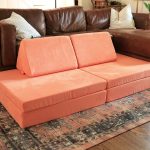Maple wood is widely regarded for its strength, durability, and unique aesthetic character, making it a popular choice for furniture, flooring, and a variety of other woodworking projects. But with so many different types of maple wood available in the market, it can be challenging to determine which type offers the best quality for your specific needs. This article will lead you through the process of identifying quality maple wood, assuring that you make a sound investment in material that will stand the test of time.
What is Maple Wood and Its Varieties
Before delving into the intricacies of wood identification, it’s crucial to understand what maple wood is and the various types available. Maple wood is derived from the maple tree, part of the genus Acer. There are over 128 species of maple, but the most commonly used for woodworking include sugar maple (Acer saccharum), also known as hard maple, and red maple (Acer rubrum). Hard maple is typically regarded as the superior choice for furniture due to its hardness and resistance to wear.
Color and Appearance
The first step in identifying quality maple wood is by examining its color and appearance. High-quality maple should have a consistent color that can range from a creamy white to a light reddish-brown, depending on the species. Hard maple, for example, has a lighter, more uniform color compared to red maple, which can have a slightly darker hue. It’s important to note that exposure to light can cause maple wood to yellow over time, so consider this natural aging process when selecting your wood.
Grain Patterns and Texture
Maple wood is well-known for its distinctive grain patterns, which can either be straight or wavy. The wood should have a fine, even texture that feels smooth to the touch. Hard maple has a more subtle grain pattern, while red maple has a more pronounced one. Quality maple wood should be free of any knots, which can affect the wood’s structural integrity and appearance. However, some woodworkers value the character that knots can bring to a project, so this is somewhat subjective.
Hardness and Density
Maple wood is one of the harder domestic hardwoods, making it an excellent choice for high-traffic areas and furniture that sees a lot of use. You can test the wood’s hardness using the Janka hardness test, which measures the amount of force required to embed a small steel ball into the wood. Hard maple has a Janka rating of around 1,450 pounds-force (lbf), while red maple is slightly softer at around 950 lbf. The higher the rating, the more durable the wood.
Weight and Heaviness
Quality maple wood should feel heavy and solid. If the wood feels lightweight or brittle, it may not be a true hardwood maple or it could be an indication of poor quality. Higher density in wood typically points towards a stronger, more durable material that can withstand wear and tear over time.
Soundness
When tapped, solid maple wood should produce a clear, crisp sound. If the wood emits a dull or hollow sound, it might contain internal defects, such as cracks or rot. This can significantly weaken the wood’s structure and may not be visible from the outside.
Responsiveness to Finish
Another indication of quality maple wood is its responsiveness to stains and finishes. Quality maple should accept stains and finishes evenly, resulting in a smooth and professional looking surface. Some types of maple can be more prone to blotching, so it’s important to test your finish on a scrap piece before applying it to your project.
Moisture Content
The moisture content of maple wood can also influence its quality. Ideally, you want wood with a moisture content of around 6% to 8% for indoor use. Wood that has not been properly dried can warp, crack, or shrink, leading to issues with the finished product. It’s worthwhile to invest in a wood moisture meter if you frequently work with wood.
Conclusion
Identifying quality maple wood involves a careful examination of color, grain patterns, hardness, weight, soundness, and moisture content. Always inspect the wood personally, and don’t be afraid to ask the seller questions regarding source, age, or any treatments the wood has undergone. Quality maple wood may be more expensive than its counterparts, but the difference in durability, appearance, and workability make it a worthwhile investment for serious woodworkers and those who appreciate the beauty of masterfully crafted maple wood pieces.
By keeping these pointers in mind, you’re well on your way to distinguishing quality maple wood for your next project with confidence. Whether you are crafting heirloom-quality furniture, installing robust hardwood flooring, or simply seeking the finest maple wood for artistic projects, knowing what to look for ensures that your creations will last and retain their natural beauty for years to come.


